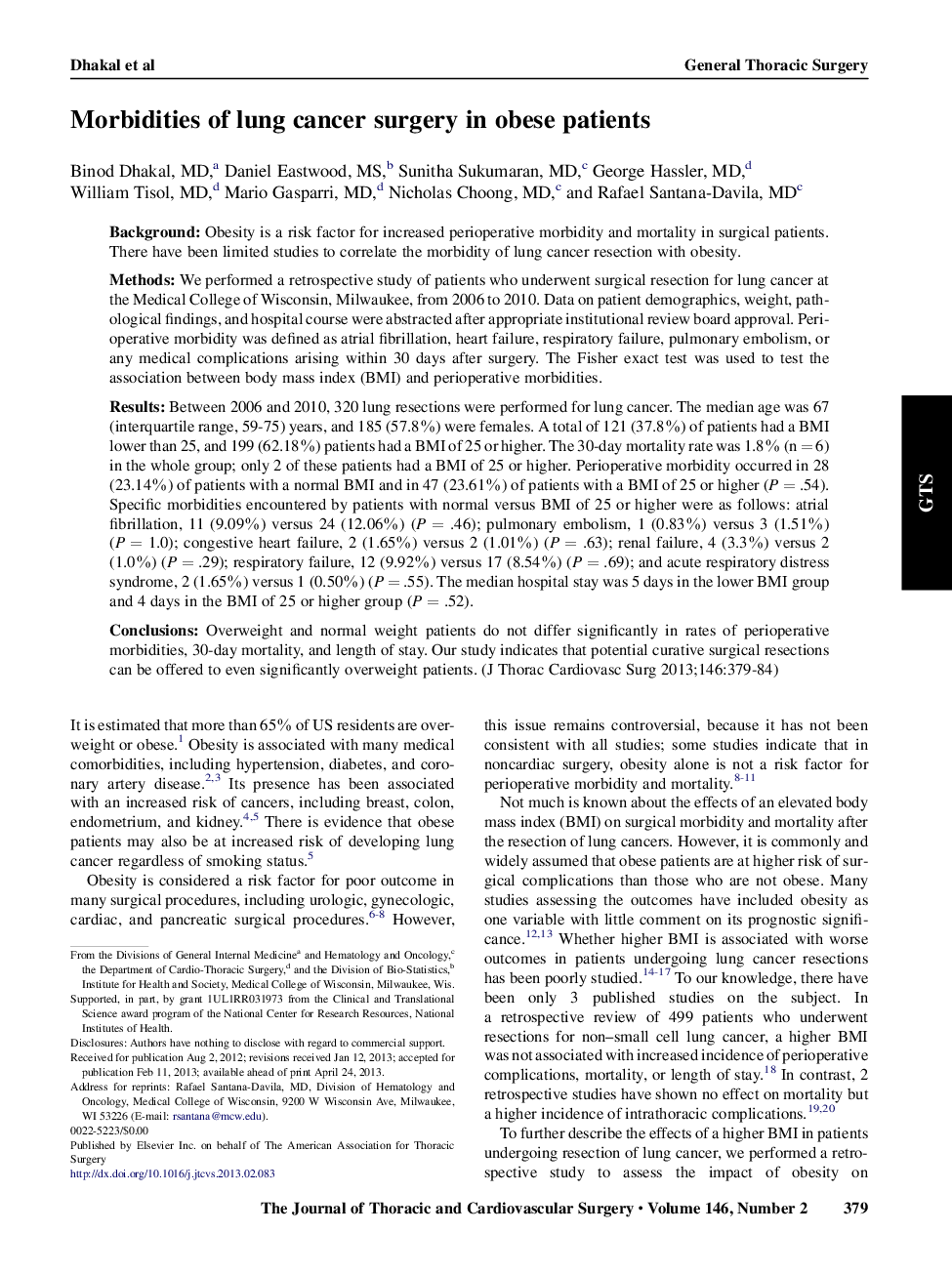| کد مقاله | کد نشریه | سال انتشار | مقاله انگلیسی | نسخه تمام متن |
|---|---|---|---|---|
| 2980923 | 1578620 | 2013 | 6 صفحه PDF | دانلود رایگان |

BackgroundObesity is a risk factor for increased perioperative morbidity and mortality in surgical patients. There have been limited studies to correlate the morbidity of lung cancer resection with obesity.MethodsWe performed a retrospective study of patients who underwent surgical resection for lung cancer at the Medical College of Wisconsin, Milwaukee, from 2006 to 2010. Data on patient demographics, weight, pathological findings, and hospital course were abstracted after appropriate institutional review board approval. Perioperative morbidity was defined as atrial fibrillation, heart failure, respiratory failure, pulmonary embolism, or any medical complications arising within 30 days after surgery. The Fisher exact test was used to test the association between body mass index (BMI) and perioperative morbidities.ResultsBetween 2006 and 2010, 320 lung resections were performed for lung cancer. The median age was 67 (interquartile range, 59-75) years, and 185 (57.8%) were females. A total of 121 (37.8%) of patients had a BMI lower than 25, and 199 (62.18%) patients had a BMI of 25 or higher. The 30-day mortality rate was 1.8% (n = 6) in the whole group; only 2 of these patients had a BMI of 25 or higher. Perioperative morbidity occurred in 28 (23.14%) of patients with a normal BMI and in 47 (23.61%) of patients with a BMI of 25 or higher (P = .54). Specific morbidities encountered by patients with normal versus BMI of 25 or higher were as follows: atrial fibrillation, 11 (9.09%) versus 24 (12.06%) (P = .46); pulmonary embolism, 1 (0.83%) versus 3 (1.51%) (P = 1.0); congestive heart failure, 2 (1.65%) versus 2 (1.01%) (P = .63); renal failure, 4 (3.3%) versus 2 (1.0%) (P = .29); respiratory failure, 12 (9.92%) versus 17 (8.54%) (P = .69); and acute respiratory distress syndrome, 2 (1.65%) versus 1 (0.50%) (P = .55). The median hospital stay was 5 days in the lower BMI group and 4 days in the BMI of 25 or higher group (P = .52).ConclusionsOverweight and normal weight patients do not differ significantly in rates of perioperative morbidities, 30-day mortality, and length of stay. Our study indicates that potential curative surgical resections can be offered to even significantly overweight patients.
Journal: The Journal of Thoracic and Cardiovascular Surgery - Volume 146, Issue 2, August 2013, Pages 379–384